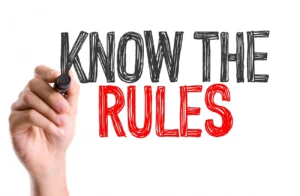 Part of an ongoing series of 5e (2014) Rules notes. See the end of the post for notes on 5.5e (2024) rules.
Part of an ongoing series of 5e (2014) Rules notes. See the end of the post for notes on 5.5e (2024) rules.
This was another player favorite in my Princes of the Apocalypse campaign, for very good reasons: it’s pretty damned deadly.
So what does it do?
You call forth spirits to protect you. They flit around you to a distance of 15 feet for the duration. If you are good or neutral, their spectral form appears angelic or fey (your choice). If you are evil, they appear fiendish.
Okay, that’s nice color text. I also played with it a bit in the campaign: when the player of the cleric started being affected by a magic item she was carrying, it had an impact on the appearance of her spectral spirits.
When you cast this spell, you can designate any number of creatures you can see to be unaffected by it. An affected creature’s speed is halved in the area, and when the creature enters the area for the first time on a turn or starts its turn there, it must make a Wisdom Saving Throw.
On a failed Save, the creature takes 3d8 Radiant damage (if you are good or neutral) or 3d8 Necrotic damage (if you are evil).
So when does it actually do damage?
One question that immediately comes up about SG is when it actually attacks. It’s easy to mistakenly assume the answer is “right away,” but … nope.
The trigger is the potential target either
- entering into the AoE (voluntarily or involuntarily), or
- being within the AoE when their turn starts.
This is similar to Moonbeam, along with a number of other spells.
You don’t take immediately damage if the spell is cast on you (i.e., with you in the area of its casting) or if it is moved over you (if the spellcaster runs up to you). As Crawford says, “creating an area of effect on a creature’s space isn’t the same as the creature entering it.”
But you do take damage if you enter the spell while it is in place, or are inside of it when your turn starts. And “entering the spell” does not have to be voluntary — a Shove or a Thunderwave can push you into the zone, and that’s considered not only legal, but, “We consider that clever play, not an imbalance, so hurl away!” Indeed, such a maneuver would lead to the target being hit twice by Spirit Guardians: once when pushed in, then again when their turn starts (unless someone yoinks them out again in the interim).
What about Line of Sight?
Spirit Guardians respects Line-of-Sight and Total Cover rule. I.e., if the circle extends through a wall, or any other cover, it is blocked.
Unlike Fireball or Stinking Cloud, which specifically call it out, Spirit Guardians will not go around a corner: they are not actual creatures flying around (which is why they can’t be attacked), but a magical effect emanating from a point (one of the corners the caster chooses). Anything not visible from that point is protected. If a potential target has only partial cover, though, they are affected (and the cover does not improve the saving throw).
Reference: dnd 5e – Can Spirit Guardians affect enemies through walls? – Role-playing Games Stack Exchange
Any changes here in 5.5e?
 There are some revisions, akin to Moonbeam, in this spell in 5.5e (2024).
There are some revisions, akin to Moonbeam, in this spell in 5.5e (2024).
Protective spirits flit around you in a 15-foot Emanation for the duration. If you are good or neutral, their spectral form appears angelic or fey (your choice). If you are evil, they appear fiendish.
This is pretty much the same, though using the new Emanation terminology.
When you cast this spell, you can designate creatures to be unaffected by it. Any other creature’s Speed is halved in the Emanation, and whenever the Emanation enters a creature’s space and whenever a creature enters the Emanation or ends its turn there, the creature must make a Wisdom Saving Throw. On a failed Save, the creature takes 3d8 Radiant damage (if you are good or neutral) or 3d8 Necrotic damage (if you are evil). On a successful Save, the creature takes half as much damage. A creature makes this Save only once per turn.
So some changes here:
First, designating unaffected creatures no longer has the restriction of being able to see them. If you fire this spell off inside a room before all of your team has entered, you can now exempt them. That’s helpful.
Second and more important, the trigger for a Save (and therefore damage) has changed. Before it was (1) entering the area or (2) starting a turn in the area. Now it’s (1) entering the area, (2) ending a turn in the area, or (3) being in a space where the area enters.
This is a major change, as it means the caster can simply run through the field doing damage to everyone they get within 15 feet of (and if they keep their distance, there’s no Opportunity of Attack worries) in addition to any other spells or attacks they want to make. True, targets only Save / take the damage once per turn (but, with Shove and Thorn Whips and the like, they could be moved into, out of, and back into the area on different characters’ turns during a round), but the number of targets has just climbed substantially.
So, overall, this spell, like Moonbeam,has gotten significantly more powerful. DMs beware!

One thought on “D&D 5e/5.5e Rules – Spells: Spirit Guardians!”